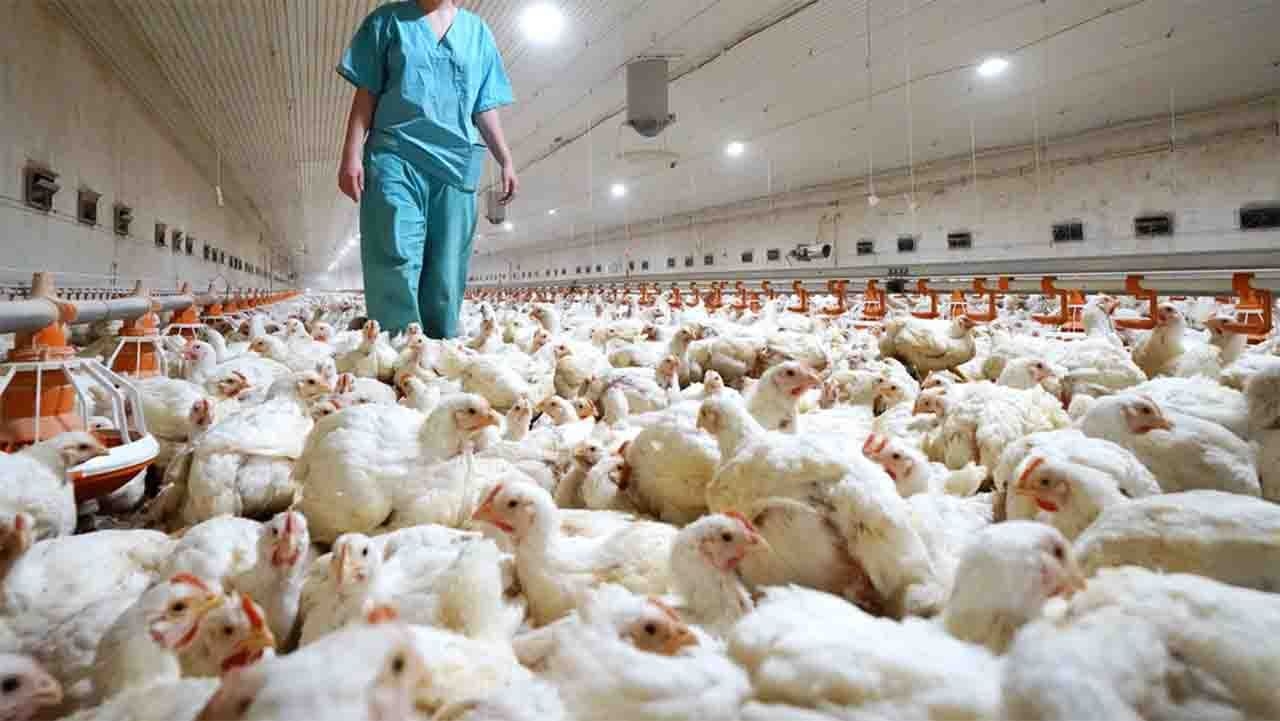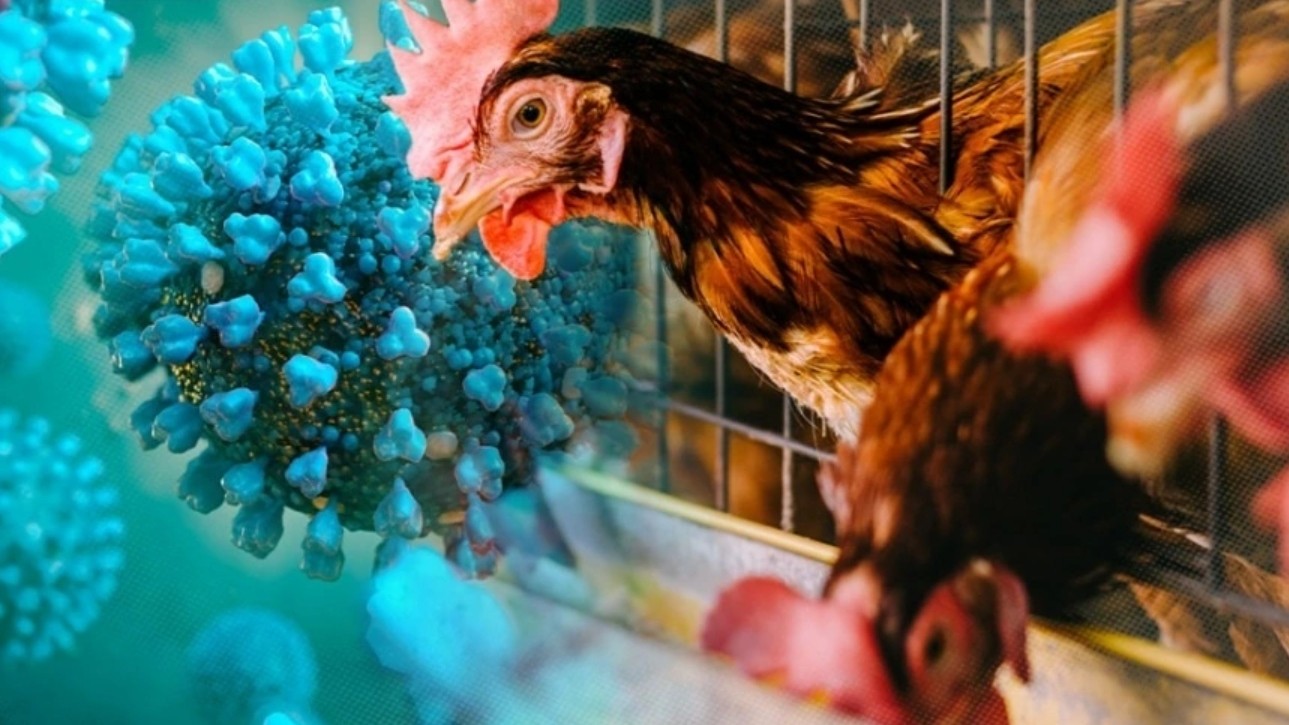Facts about H5N8: First case of avian flu transmitted from birds to humans
 |
| The head of Russia's health watchdog Rospotrebnadzor, Anna Popova, said scientists at the Vektor laboratory had isolated the strain's genetic material from seven workers at a poultry farm |
Facts about H5N8 avian flu with the first case in humans
There are different subtypes of avian influenza viruses. While the highly contagious strain H5N8 is lethal for birds it has never before been reported to have spread to humans. However, Russia records first case of H5N8 avian flu in humans, alerts WHO.
The head of Russia's health watchdog Rospotrebnadzor, Anna Popova, said scientists at the Vektor laboratory had isolated the strain's genetic material from seven workers at a poultry farm in southern Russia, where an outbreak was recorded among the birds in December.
The workers did not suffer any serious health consequences, she added. They are believed to have caught the virus from poultry on the farm.
“Information about the world's first case of transmission of the avian flu [H5N8] to humans has already been sent to the World Health Organization,” Popova said.
Popova praised “the important scientific discovery,” saying “time will tell” if the virus can further mutate.
“The discovery of these mutations when the virus has not still acquired an ability to transmit from human to human gives us all, the entire world, time to prepare for possible mutations and react in an adequate and timely fashion,” Popova said.
The WHO confirmed Saturday that Russia had notified it of the development.
WHO stressed that the Russian workers were asymptomatic and that no onward human-to-human transmission had been reported.
What is H5N8 avian flu?
Avian influenza virus (H5N1) emerged in Hong Kong in 1997, causing severe human disease. In recent years, several outbreaks have been reported in different parts of Asia, Europe and Africa, raising concerns of dissemination of a new and highly lethal influenza pandemic.
Although H5N1 has not been capable of sustaining human-to-human transmission, the ability of the virus to undergo variation due to mutations and reassortment, clearly poses the possibility of viral adaptation to the human species.
Outbreaks of the H5N8 strain have been reported in Russia, Europe, China, the Middle East and North Africa in recent months but so far only in poultry. Several states in India had also reported the outbreak of avian flu in January but there was no report of transmission to humans.
People can get infected with avian and swine influenza viruses, such as bird flu subtypes A(H5N1) and A(H7N9) and swine flu subtypes such as A(H1N1).
The strain is a subtype of the influenza A virus that causes flu-like symptoms in wild birds and poultry. It poses a low risk to people, but it is fatal for birds. This was found in crows in Rajasthan and Madhya Pradesh. Until recently, it was not known to have affected humans.
According to the WHO, people usually get infected through direct contact with animals or contaminated environments, and there is no sustained transmission among humans.
H5N1 in people can cause severe illness and has a 60 percent mortality rate.
According to experts, both H5N1 (another strain of avian influenza) and H5N8 have high pathogenicity or the ability of a pathogen to cause disease, but they don’t infect humans very effectively. However, past outbreaks among farm birds have needed extensive slaughtering programmes.
Russia's Vektor State Virology and Biotechnology Center, which detected the transmission to the poultry farm workers, also developed one of the country's several coronavirus vaccines.
In televised remarks, Vektor chief Rinat Maksyutov said the lab was ready to begin developing test kits that would help detect potential cases of H5N8 in humans and to begin work on a vaccine.
How was H5N8 transmitted to humans?
"Preliminary information indicates that the reported cases were workers exposed to bird flocks," Reuters said citing an email from WHO's European arm. They were asymptomatic and no onward human to human transmission was reported. "We are in discussion with national authorities to gather more information and assess the public health impact of this event," the email added.
The majority of human bird flu infections have been associated with direct contact with infected live or dead poultry, though properly cooked food is considered to be safe, Reuters reported.
H5N8 bird flu detected in Beijing , China
An outbreak of H5N8 bird flu among wild swans at Beijing's Old Summer Palace has been brought under control, the local animal disease prevention and control department announced on Tuesday, minimizing the possibility that the disease could spread.
The infections are unlikely to cause a wider epidemic, according to experts and the authority.
"The disease currently only affected some of the birds and has been effectively controlled. No infection has been seen in other areas," the animal disease prevention and control department in the city's Haidian district said.
The H5N8 bird flu caused the deaths of three black swans at the Old Summer Palace in Haidian district from January 22 to 25.
The infections won't spread among other animals or humans, partly because there are no poultry farms within five kilometers of the park, Zhu Yi, an associate professor at China Agricultural University in Beijing, told the Global Times.
This was the third location in China to report cases of the H5N8 bird flu among wild swans over the last three months. North China's Shanxi Province reported an outbreak in November 2020, and East China's Shandong Province reported an outbreak on January 19.
H5N8 detected in crows, bird flu alert in Bihar, IndiaDozens of crows died in state’s West Champaran district in January 2021, following which the animal husbandry department officials collected samples and sent them for test at a laboratory in Kolkata. “The report confirmed H5N8 strain of bird flu. We have sounded alert and stepped surveillance to check spread of this virus,” Sunil Kumar Thakur, district animal husbandry officer, West Champaran, told Down to Earth. Thakur added that the virus is not “deadly” and suggested people to consume chickens as usual without any fear: “People panic in the absence of proper information. I suggest them to consume chickens without nursing any fear.” The bird flu outbreak has been reported from at least 13 Indian states so far, including Kerala, Rajasthan, Madhya Pradesh, Himachal Pradesh, Haryana, Gujarat, Delhi, Uttar Pradesh, Maharashtra, Chhattisgarh, Uttarakhand, Punjab and Jammu and Kashmir. Infection in humans has not been reported in India, though the disease is zoonotic. “There is no direct evidence that AI viruses can be transmitted to humans via consumption of contaminated poultry products,” the statement said. |
 What are Influenza A and B Causes, Symptoms and Prevention What are Influenza A and B Causes, Symptoms and Prevention Flu is a contagious respiratory illness that can infect the nose, throat, and sometimes the lungs. Its symptoms can be mild or severe. The "flu" ... |
 Influenza A: Symptoms and best treatment Influenza A: Symptoms and best treatment Influenza A is a common type of flu virus that can cause a cough, body aches, and a sore throat. Here, we discuss its ... |
 Influenza B: Symptoms and best treatment Influenza B: Symptoms and best treatment Influenza, or the flu, is a respiratory illness that is very common during the winter months. It affects the lungs, nose, and throat, causing ... |

























